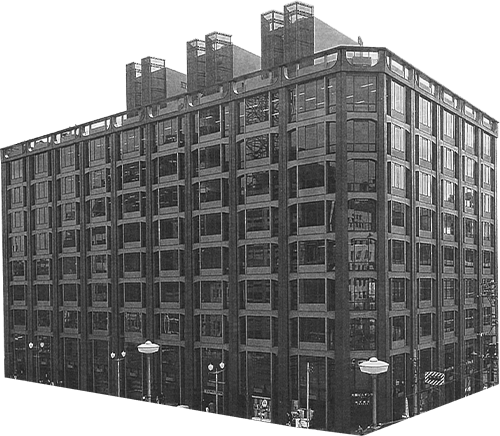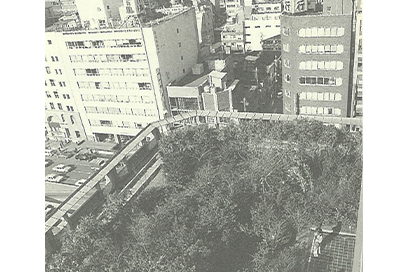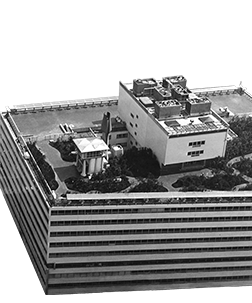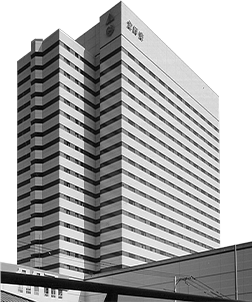 04
1967
04
1967
Tokyo
The Yaesu Daibiru Building
A Bold Project
That Leverages Its Location
as an Urban Gateway
The Birth of Rooftop Sanctuaries
The installation of a rooftop garden at the Yaesu Daibiru Building following the rooftop garden installed on the Shin-Daibiru Building in Osaka is another example of Daibiru’s functional and aesthetic contributions to the local community as mentioned earlier. Although this garden was not as large as the Shin-Daibiru Building garden, it attracted numerous wild birds because fruit-bearing trees expressly for the purpose of feeding birds rather than producing flowers were planted. This garden truly became a mecca and a sanctuary for wild birds in the heart of urban Tokyo. This is Japan 1969, a magazine published in 1969 to inform overseas readers about Japan, featured Daibiru’s rooftop garden initiative under the headline “Roof-Top Bird Sanctuaries.”
That article described Kudo’s thoughts and beliefs about rooftop gardens, and he expressed his reasons for creating Japan’s first rooftop garden at the Shin-Daibiru Building. “As the dominant species, we humans have a responsibility toward all living things to protect their lives and, accordingly, to protect their environments. I believe this is where our duty to conserve the environment comes from.” Even then, no small number of people was pointing out the need for environmental conservation, but none outdid Kudo, whose convictions were backed by his deep insight into environmental conservation. Kudo expressed further thoughts in the article: “Most office building rooftops in Tokyo are used for beer gardens in the summer, golf driving ranges, and baseball batting practice cages, but I will be happy if the Yaesu Daibiru Building can set a successful example for more rooftop gardens and sanctuaries to be built.”
-
1927 1931 Hibiya Daibiru Buildings
No. 1 and No. 2 -
2007 International Operations
-
- An Unexpected Discovery of a Good Property
- Mutual Trust and a Long-Term Perspective as Points of Agreement
- The Acquisition of a Property in Hanoi Through Unity of Philosophy
- Implementing Daibiru Quality Through Building Renovations
- Challenges in Australia, Our Second Overseas Expansion Target
- The Discovery of 275 George Street
- Difficult Contract Negotiations with JHG
- Overcoming Several Unexpected Difficulties
-




